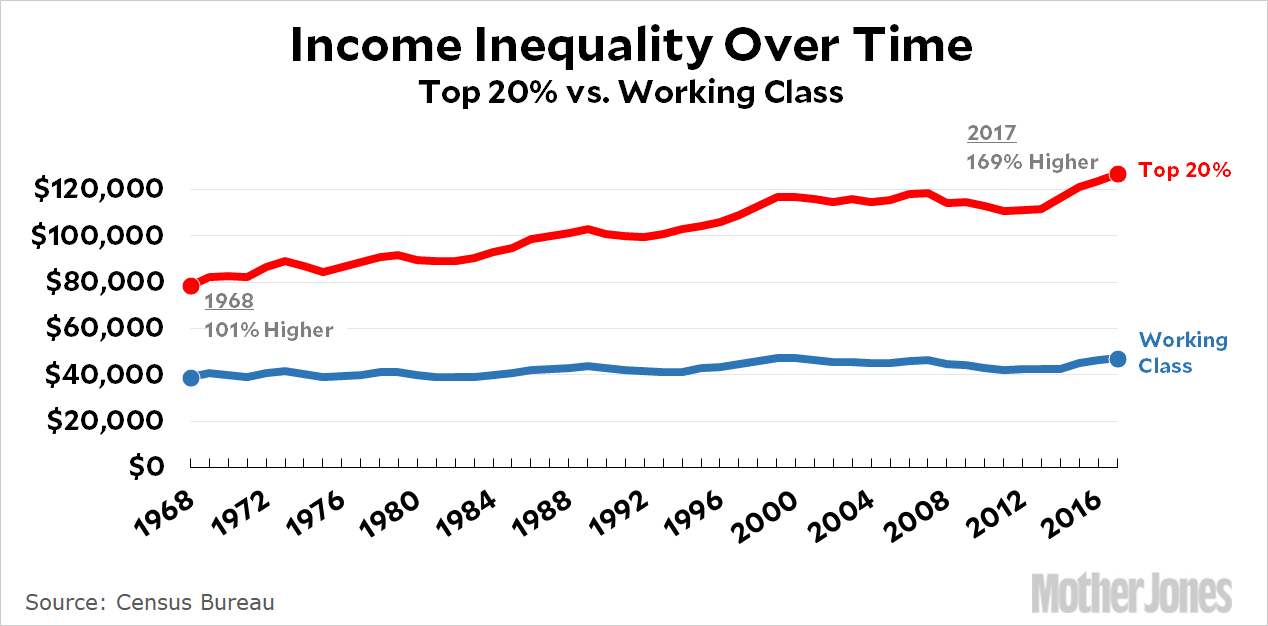David Brooks begs Democrats not to go nuts this year:
Democrats are trying to start a populist v. populist campaign against Trump, which is a fight they cannot win. Democratic populists talk as if the only elite in America is big business, big pharma — the top 1 percent. This allows them to sound populist without actually going after their donor bases — the highly educated affluent people along the coasts.
But the big divide in America is not between the top 1 percent and the bottom 99. It’s between the top 20 percent and the rest. These are the highly educated Americans who are pulling away from everybody else and who have built zoning restrictions and meritocratic barriers to make sure outsiders can’t catch up.
Is Brooks right? Let’s go to the numbers!

Yep, the top 20 percent has indeed been pulling away from everyone else. But I’d put this differently than Brooks. The vast wealth of the top 1 percent is important for macro reasons: it sucks away a lot of income that could be going elsewhere and distorts the normal system of rewards we expect from a mixed economy. However, the top 20 percent are important for optical reasons: these are the folks that working class families are more likely to compare themselves to. The fact that they make 0.01 percent as much as Mark Zuckerberg instead of 0.1 percent as much doesn’t register. But the fact that they make a third as much as the upper middle class instead of half as much—well, that’s a whole lot easier to see, and the consequences are far more obvious.
On the rest of Brooks’s list, I kinda sorta agree with him. Not on policy, mind you, but on the fact that Dems may be moving too far left for public comfort. This was pretty obvious last night when immigration came up and was treated like a mirror image of the 2012 Republican campaign. Back then, Republicans all seemed to be in a contest to show who could be toughest on the border. A wall! No, a wall with a moat! No, a wall with a moat filled with alligators!
Democrats seem to be inching the opposite way, and last night almost none of them were willing to endorse the idea of deporting anyone except hard core felons. As Brooks says, “So now you’ve got a lot of candidates who sound operationally open borders.” This is exactly what Donald Trump is trying to make them sound like, and they’re cooperating. This is probably bad policy and bad politics.
Brooks also criticizes Democrats for being critical of the economy, but I don’t see a problem with that. Nor do I see a big problem with the aspiration of getting rid of private insurance, though I agree that it needs to be done carefully.
Roughly speaking, my advice is to go after all income inequality. Attack the top 1 percent for sucking up all the income that would go to workers if we still had labor unions around to fight for them. But then point to the upper middle class as an example of what everyone could aspire to if income were more equitably shared. That’s my recommendation, and it’s worth every penny you paid for it.













